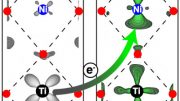
Researchers have introduced an efficient diabetes detection method using a simple mathematical calculation from a blood test, proving its reliability and affordability in a study published in the Journal of Diabetes.
Diabetes frequently goes unnoticed until it has caused organ or nerve damage, partly because early-stage diagnosis is challenging and time-consuming.
An international team of researchers headed by Associate Professor Dr. Johannes Dietrich from the Department of Medicine I of Ruhr University Bochum at St. Josef Hospital in Bochum, Germany, has shown that a mathematical calculation based on just two values taken from a blood sample enables the reliable and inexpensive diagnosis of diabetes at an early stage. The researchers recently published their findings in the Journal of Diabetes.
Diabetes often remains long undetected
“Thirty percent of all people who suffer from diabetes haven’t yet been diagnosed and, consequently, don’t receive any treatment,” points out Johannes Dietrich. This is partly due to the fact that it’s not easy to detect the disease at an early stage. “Diabetes sets in gradually, and our diagnostic options are not sensitive enough to detect it; moreover, they aren’t specific enough, meaning that false positive results can also occur,” stresses Dietrich.
Together with his colleagues from Germany, India, Singapore, and the UK, he has researched a new method for the early detection of diabetes. The method, called SPINA Carb, is based on mathematical modeling. All that is required is a blood sample, which is taken in the morning before the patient’s have their breakfast.
Two values measured in the sample are relevant: the insulin value and the glucose value. “We enter these values into an equation that describes the body’s control loop for sugar metabolism and break it down according to a certain variable,” explains Johannes Dietrich. The result is a so-called static disposition index (SPINA-DI).
More reliable than other markers
In computer simulations, the research team proved that the new parameter confirms the theory of dynamical compensation, which predicts that Insulin resistance in people with metabolic syndrome is compensated for by the pancreatic beta cells increasing their activity. A subsequent study of three groups of volunteers from the USA, Germany, and India supported this assumption.
“In all three groups, we found that the calculated SPINA-DI correlated with relevant indicators of metabolic function, such as the response to an oral glucose tolerance test,” outlines Johannes Dietrich. On top of that, SPINA-DI proved more reliable than other calculated markers of glucose metabolism and allowed a more accurate diagnosis.
“The new method is not only cost-effective but also precise and reliable,” conclude the authors. “It could complement and, in many cases, even replace more complex established methods.”
Reference: “A novel simple disposition index (SPINA-DI) from fasting insulin and glucose concentration as a robust measure of carbohydrate homeostasis” by Johannes W. Dietrich, Assjana Abood, Riddhi Dasgupta, Shajith Anoop, Felix K. Jebasingh, R. Spurgeon, Nihal Thomas and Bernhard O. Boehm, 2 January 2024, Journal of Diabetes.
DOI: 10.1111/1753-0407.13525









Be the first to comment on "Scientists Develop Simple and Cost-Effective Early Diabetes Test"